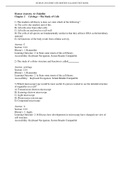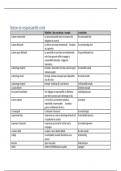Summary
Summary Finance part 1 (Finance for Pre-masters)
- Module
- Institution
- Book
This document provides all the slides / lectures given from Chapter 1 - Chapter 13. The used book is: Corporate Finance, DeMarzo. All formula from all the chapters are explained for better understanding. There is also theory.
[Show more]













